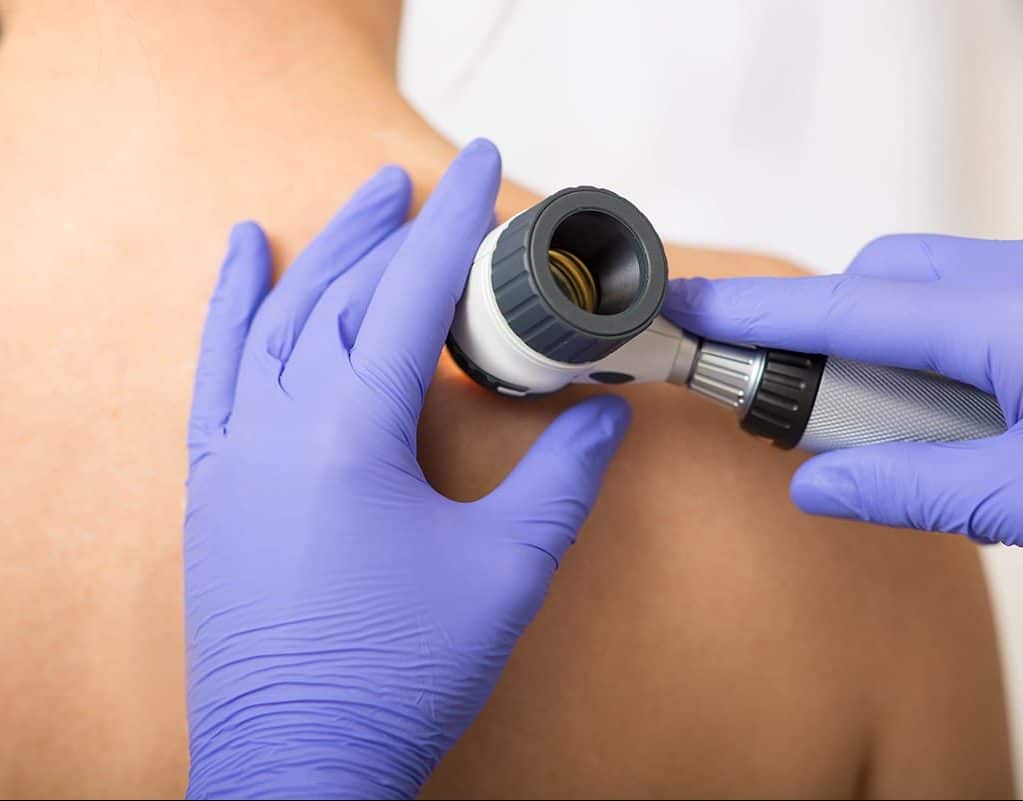
You visit your primary care doctor every year for a checkup, and schedule regular teeth cleanings with your dentist — but what about your dermatologist?
Dermatologists are specially trained in detecting skin cancer, the most common form of cancer in the U.S. Most skin cancers are highly treatable, especially when they’re caught early, so having skin cancer screenings is an important part of your healthcare routine.

There are three main types of skin cancer: basal cell carcinoma, squamous cell carcinoma and melanoma. While they each look different, the most common warning sign of any kind of skin cancer is a change on the skin, such as a new growth or a visible change in an existing growth or mole.
The first thing that will happen during your skin check is a review of your medical history. Contrary to popular belief, dermatologists are actual doctors and need to know your medical history. Please come with your list of medications and allergies handy. Also, please bring in any dermatologic medications you have been using.
For the exam, you’ll be asked to remove all of your clothing and put on a gown.
To make this as easy as possible, we recommends that you do the following before your appointment:
- Remove all makeup.
- Remove any bandages, braces or other things that may be covering the skin.
- Do not wear jewelry.
If your doctor doesn’t find anything suspicious, the exam shouldn’t take more than 15 minutes.
A dermatologist will check your skin from head to toe, making note of any spots that need monitoring or further treatment. Many dermatologists will use a lighted magnifier called a dermatoscope to view moles and spots closely. These devices assist the dermatologist in determining if a mole or spot is normal or abnormal.
 Dermatoscope
Dermatoscope
WHAT HAPPENS IF THEY FIND SOMETHING?
If the doctor finds a spot that could be cancerous or pre-cancerous, they’ll likely want to take a picture for your medical chart and perform a skin biopsy.
During a biopsy, the doctor will remove a small amount of tissue to be examined under a microscope by a pathologist. This is a simple procedure that can be done right then and there, in the office. They’ll clean the area of skin where the spot is located, numb it with an injection of anesthesia, and use a blade or scalpel to take a sample of the skin. You shouldn’t feel any pain, aside from the pinch from the injection.
That sample will be sent to the lab for testing, and your doctor will share the results with you when they are available. This usually happens within a few days but could take up to a week or longer.
If the spot turns out to be cancerous, it may need to be completely removed or treated with other methods.
Take matters into your own hands with self-screening
Regardless of how often you see your dermatologist, you should do your best to monitor your own skin – and that of your partner or close family members.